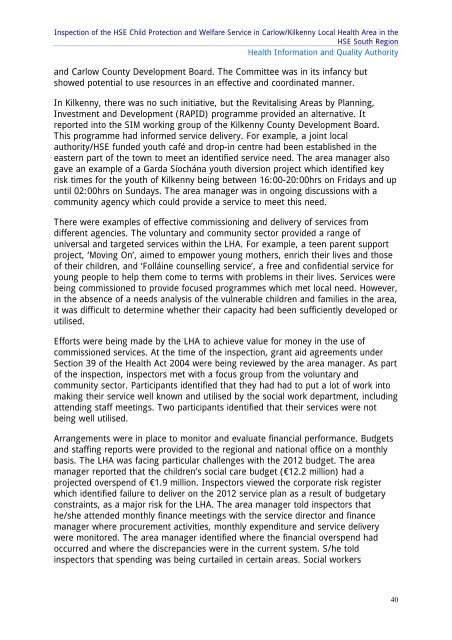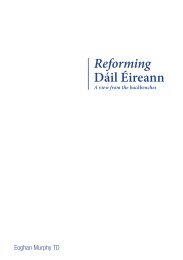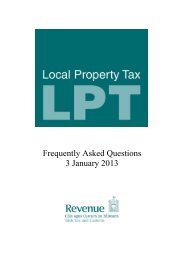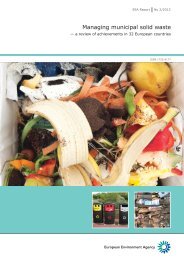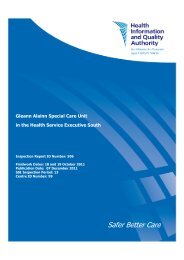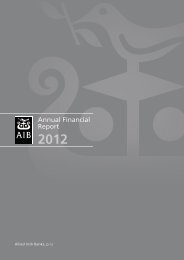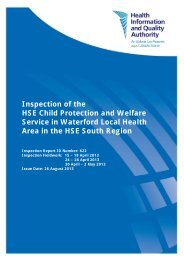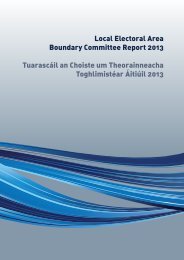HSE Child Protection and Welfare Service in Carlow/Kilkenny - hiqa.ie
HSE Child Protection and Welfare Service in Carlow/Kilkenny - hiqa.ie
HSE Child Protection and Welfare Service in Carlow/Kilkenny - hiqa.ie
You also want an ePaper? Increase the reach of your titles
YUMPU automatically turns print PDFs into web optimized ePapers that Google loves.
Inspection of the <strong>HSE</strong> <strong>Child</strong> <strong>Protection</strong> <strong>and</strong> <strong>Welfare</strong> <strong>Service</strong> <strong>in</strong> <strong>Carlow</strong>/<strong>Kilkenny</strong> Local Health Area <strong>in</strong> the<strong>HSE</strong> South RegionHealth Information <strong>and</strong> Quality Authority<strong>and</strong> <strong>Carlow</strong> County Development Board. The Committee was <strong>in</strong> its <strong>in</strong>fancy butshowed potential to use resources <strong>in</strong> an effective <strong>and</strong> coord<strong>in</strong>ated manner.In <strong>Kilkenny</strong>, there was no such <strong>in</strong>itiative, but the Revitalis<strong>in</strong>g Areas by Plann<strong>in</strong>g,Investment <strong>and</strong> Development (RAPID) programme provided an alternative. Itreported <strong>in</strong>to the SIM work<strong>in</strong>g group of the <strong>Kilkenny</strong> County Development Board.This programme had <strong>in</strong>formed service delivery. For example, a jo<strong>in</strong>t localauthority/<strong>HSE</strong> funded youth café <strong>and</strong> drop-<strong>in</strong> centre had been established <strong>in</strong> theeastern part of the town to meet an identif<strong>ie</strong>d service need. The area manager alsogave an example of a Garda Síochána youth diversion project which identif<strong>ie</strong>d keyrisk times for the youth of <strong>Kilkenny</strong> be<strong>in</strong>g between 16:00-20:00hrs on Fridays <strong>and</strong> upuntil 02:00hrs on Sundays. The area manager was <strong>in</strong> ongo<strong>in</strong>g discussions with acommunity agency which could provide a service to meet this need.There were examples of effective commission<strong>in</strong>g <strong>and</strong> delivery of services fromdifferent agenc<strong>ie</strong>s. The voluntary <strong>and</strong> community sector provided a range ofuniversal <strong>and</strong> targeted services with<strong>in</strong> the LHA. For example, a teen parent supportproject, ‘Mov<strong>in</strong>g On’, aimed to empower young mothers, enrich their lives <strong>and</strong> thoseof their children, <strong>and</strong> ‘Follá<strong>in</strong>e counsell<strong>in</strong>g service’, a free <strong>and</strong> confidential service foryoung people to help them come to terms with problems <strong>in</strong> their lives. <strong>Service</strong>s werebe<strong>in</strong>g commissioned to provide focused programmes which met local need. However,<strong>in</strong> the absence of a needs analysis of the vulnerable children <strong>and</strong> famil<strong>ie</strong>s <strong>in</strong> the area,it was difficult to determ<strong>in</strong>e whether their capacity had been suffic<strong>ie</strong>ntly developed orutilised.Efforts were be<strong>in</strong>g made by the LHA to ach<strong>ie</strong>ve value for money <strong>in</strong> the use ofcommissioned services. At the time of the <strong>in</strong>spection, grant aid agreements underSection 39 of the Health Act 2004 were be<strong>in</strong>g rev<strong>ie</strong>wed by the area manager. As partof the <strong>in</strong>spection, <strong>in</strong>spectors met with a focus group from the voluntary <strong>and</strong>community sector. Participants identif<strong>ie</strong>d that they had had to put a lot of work <strong>in</strong>tomak<strong>in</strong>g their service well known <strong>and</strong> utilised by the social work department, <strong>in</strong>clud<strong>in</strong>gattend<strong>in</strong>g staff meet<strong>in</strong>gs. Two participants identif<strong>ie</strong>d that their services were notbe<strong>in</strong>g well utilised.Arrangements were <strong>in</strong> place to monitor <strong>and</strong> evaluate f<strong>in</strong>ancial performance. Budgets<strong>and</strong> staff<strong>in</strong>g reports were provided to the regional <strong>and</strong> national office on a monthlybasis. The LHA was fac<strong>in</strong>g particular challenges with the 2012 budget. The areamanager reported that the children’s social care budget (€12.2 million) had aprojected overspend of €1.9 million. Inspectors v<strong>ie</strong>wed the corporate risk registerwhich identif<strong>ie</strong>d failure to deliver on the 2012 service plan as a result of budgetaryconstra<strong>in</strong>ts, as a major risk for the LHA. The area manager told <strong>in</strong>spectors thathe/she attended monthly f<strong>in</strong>ance meet<strong>in</strong>gs with the service director <strong>and</strong> f<strong>in</strong>ancemanager where procurement activit<strong>ie</strong>s, monthly expenditure <strong>and</strong> service deliverywere monitored. The area manager identif<strong>ie</strong>d where the f<strong>in</strong>ancial overspend hadoccurred <strong>and</strong> where the discrepanc<strong>ie</strong>s were <strong>in</strong> the current system. S/he told<strong>in</strong>spectors that spend<strong>in</strong>g was be<strong>in</strong>g curtailed <strong>in</strong> certa<strong>in</strong> areas. Social workers40


